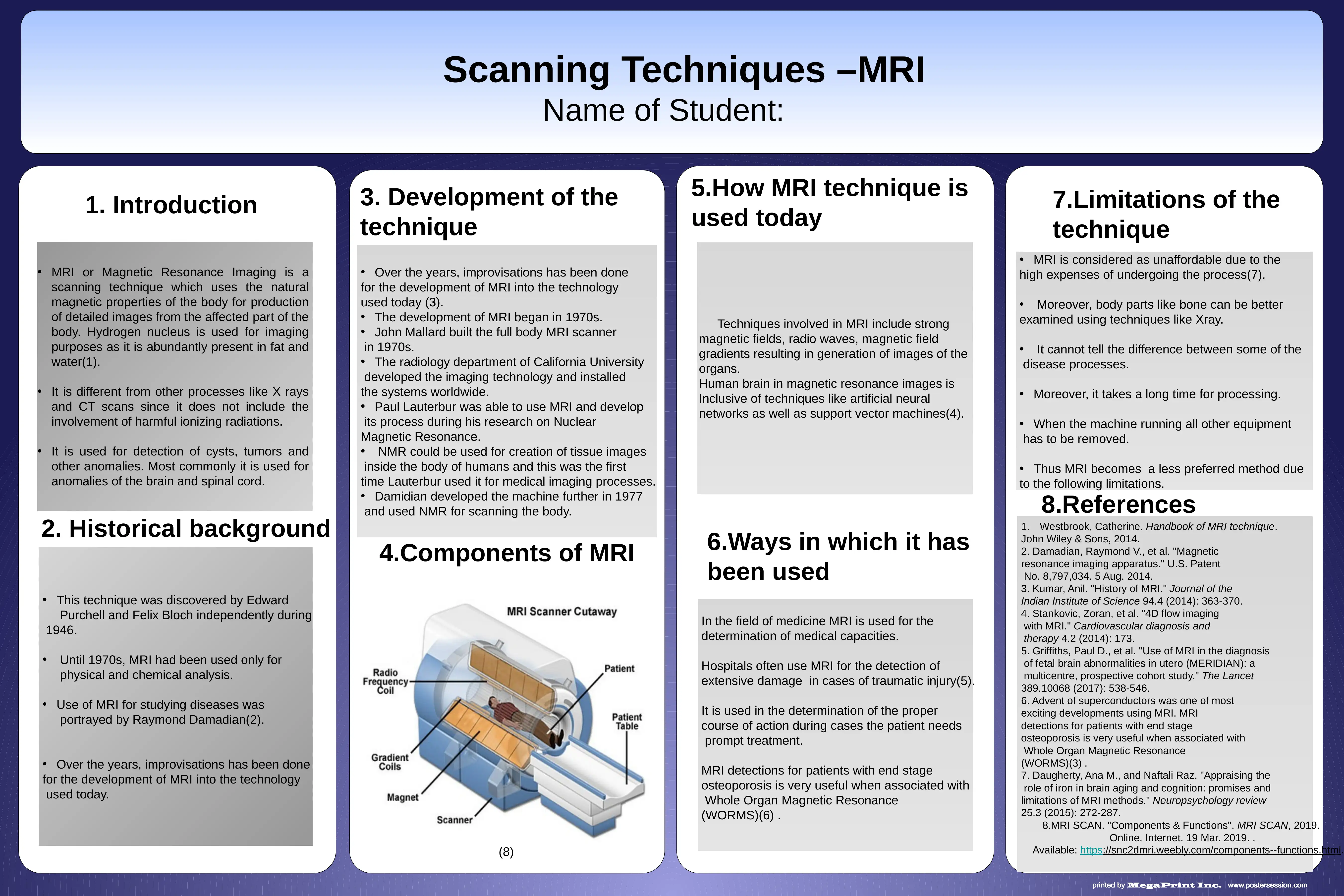Report on MRI Scanning Techniques: Development, Uses, Limitations
VerifiedAdded on 2023/06/15
|1
|809
|143
Report
AI Summary
This report provides a detailed overview of Magnetic Resonance Imaging (MRI) scanning techniques, which utilize the body's natural magnetic properties to create detailed images. Unlike X-rays and CT scans, MRI does not involve harmful ionizing radiation, making it a preferred method for detecting cysts, tumors, and other anomalies, particularly in the brain and spinal cord. The report traces the historical development of MRI from the 1970s, highlighting key contributions by researchers like John Mallard, Paul Lauterbur, and Raymond Damadian. It outlines the components of an MRI machine and discusses how the technique is used in modern medicine, including its application in diagnosing traumatic injuries and studying diseases. The report also addresses the limitations of MRI, such as its high cost, long processing time, and inability to differentiate between certain disease processes, noting that alternative methods like X-rays may be more suitable for examining bones. Despite these limitations, MRI remains a crucial tool in determining appropriate medical actions and assessing medical capacities.







![[object Object]](/_next/static/media/star-bottom.7253800d.svg)